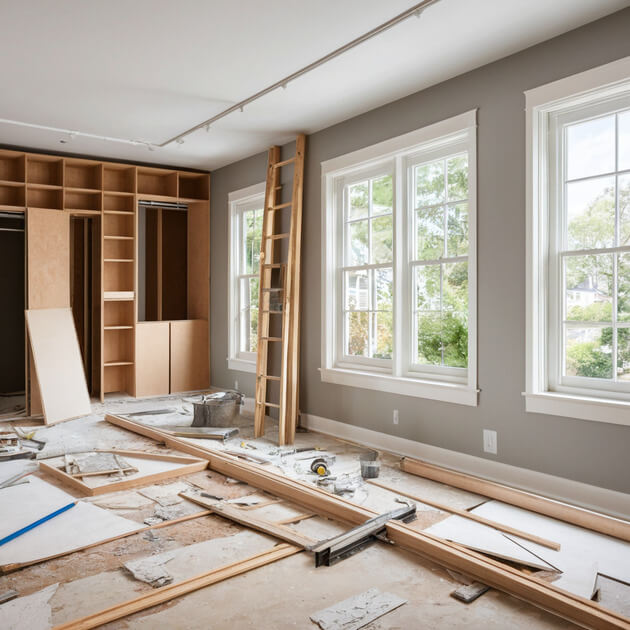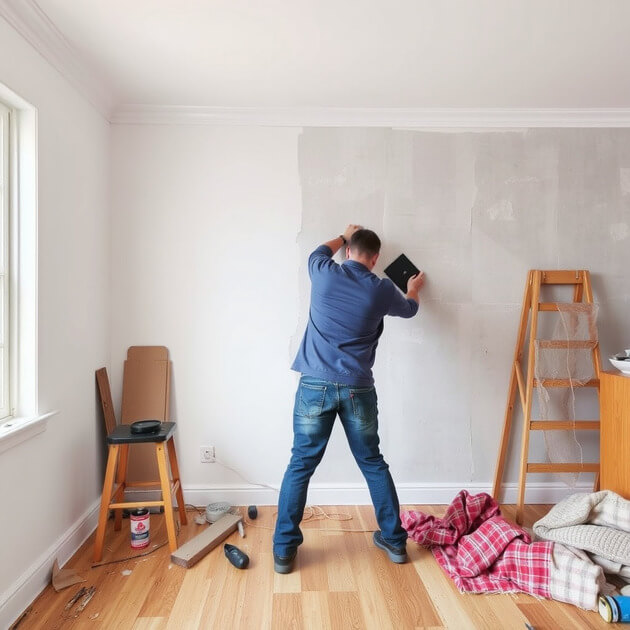Starting a home renovation project can be both thrilling and daunting, especially when you’re working with a tight budget.
As a homeowner, I understand the desire to create a beautiful and functional living space while being mindful of financial constraints
Fortunately, with a little creativity and strategic planning, it’s possible to slash your home renovation cost and still achieve an amazing result.
What Is A Realistic Budget For Your Renovation?
- Determine how much you can afford to spend without compromising your financial stability.
- Once you have a clear understanding of your financial limitations, you can begin to allocate funds for various aspects of the renovation, such as materials, labor, and unexpected expenses.
- It is always better to overestimate your costs than to underestimate them as this will keep you from running out of funds halfway through the project.
Know Your Needs And Wants

- Begin by identifying the areas of your home that require immediate attention, such as structural repairs, plumbing issues, or safety concerns. These should take precedence over cosmetic upgrades or luxury additions.
- Next, make a list of your desired renovations and rank them based on their importance and impact on your daily life. For example, a functional kitchen or bathroom renovation may take priority over updating a guest bedroom or adding a home theater.
By prioritizing your needs and wants, you can focus your resources on the most critical areas, ensuring that your renovation budget is spent wisely and delivering the greatest return on investment.
Negotiate The Best Deal With Your Contractors
- Start by obtaining multiple quotes from reputable contractors in your area. This not only allows you to compare prices but also gives you leverage in negotiations.
- When reviewing quotes, pay close attention to the details, including the scope of work, materials included, and any additional fees or charges.
- Once you’ve narrowed down your options, it’s time to negotiate.
- Consider offering to pay in cash or upfront for a discount, or propose alternative payment arrangements that may be more favorable to both parties.
Do not be afraid to ask questions and clarify any ambiguities to ensure you’re comparing apples to apples.
Be respectful but firm in your approach, and don’t be afraid to walk away if a contractor is unwilling to meet your reasonable demands.
Maximizing Savings Through Repurposing And Recycling

- Start by taking inventory of the items in your home that can be repurposed or reused in your renovation. For example, you may be able to refinish an old piece of furniture or repurpose doors or cabinets in a new space.
- Salvage materials from demolition or deconstruction projects, such as wood beams, bricks, or architectural elements.
- Source recycled or reclaimed items like countertops, flooring, or even appliances.
Know Your Financing Options
- Home equity loan or line of credit : allows you to borrow against the equity you’ve built up in your home. These loans often come with competitive interest rates and flexible repayment terms, making them a viable choice for larger renovation projects.
- Personal loan or credit card : While these options may have higher interest rates in the long run, they can provide the necessary funds to complete smaller renovations or cover unexpected expenses.
- Government-backed programs or grants : specifically designed to assist homeowners with renovations, such as energy-efficiency upgrades or accessibility modifications.
Common Mistakes To Avoid!

- Underestimating costs: Failing to account for hidden expenses, such as permits, inspections, or unexpected repairs.
- Cutting corners on quality: compromising on quality materials or workmanship can lead to costly repairs or replacements down the line.
- Neglecting proper planning: Rushing into a renovation without a well-thought-out plan can result in costly mistakes, delays, and potential safety issues.
- Ignoring resale value: forgetting the impact of your renovation choices on your home’s resale value.
Cost-Cutting Hacks!
Now that we’ve explored the fundamental strategies for renovating on a budget, let’s dive into some specific cost-cutting hacks that can help you maximize your savings :
- Discounted materials : these deeply discounted materials can save you a significant amount of money on your renovation projects.
- Open-source design : create your own renovation plans and designs utilizing open-source design resources and online tutorials
- Rent or borrow tools : Rather than purchasing expensive tools that you may only use once or twice
- Opt for sweat equity : If you have the time and skills, tackling certain renovation tasks yourself can save you a substantial amount on labor costs.
- Refinish instead of replacing : consider refinishing or resurfacing them for a fresh, updated look at a fraction of the cost.
- Utilize multi-purpose spaces : design rooms that can serve multiple functions, eliminating the need for costly additions or expansions.
- Leverage energy-efficient upgrades : These upgrades can not only save you money on your renovation but also lead to long-term savings on your utility bills.
Remember, renovating on a budget is a marathon, not a sprint.



